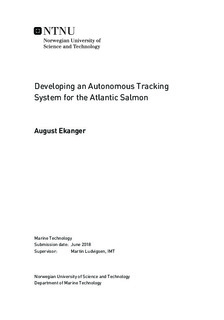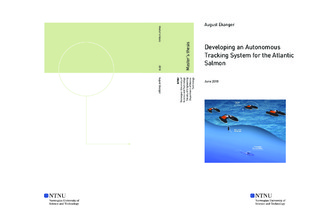| dc.description.abstract | This thesis presents an autonomous fish tracking system for a tagged Atlantic Salmon using
four unmanned surface vehicles equipped with acoustic receivers. The system can be
used to monitor both hatchery farmed and wild Atlantic salmon in an open ocean environment,
and scientists can use the data to develop a better understanding of the species
and the way it interacts with its environment. Error sources associated with the purposed
system are presented. A target localization method based on the principle of time difference
of arrival positioning (multilateration), i.e an extended Kalman filter using acoustic
data, is implemented and tested in a unified navigation environment (DUNE). The results
reveal successful real-time localization of a target fish in a simulation located in the Trondheimsfjord.
The hardware implementations presented in this thesis involves the integration
of a GPS-receiver, CAN-controller, motor controller and Torqeedo thrusters with a single
board computer. Thrust commands and thruster response is successfully tested at NTNU
Gløshaugen, Trondheim, Norway.
This thesis examines how important control system components of a fish tracking system
can be developed to optimize system performance. A conceptual control system with
objectives of keeping receivers within transmission range while minimizing geometric dilution
of precision (GDOP), travel distance and need for inter-vehicle communication, is
presented. A conceptual formation controller unifies these system objectives in a single
algorithm, and positions USVs in circular and circle-arc shaped formations depending on
whether the target is located within a restricted area or in the open ocean. The need for
inter-vehicle communication is significantly reduced by allowing vessels to operate with
independent guidance systems. Positioning models for a cable-connected and fixed acoustic
receiver configuration are developed with the purpose of accurately determining their
position relative to a GPS aboard the vessel, while being subject to hydrodynamic forces. | |

